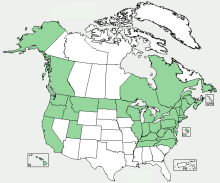Lawn Daisy
Botanical name: Bellis perennis
Family: Daisy (Asteraceae)
Collectability: plentiful, common, widespread, weed
Main benefit

 complaints of the respiratory tract, rheumatism and skin complaints
complaints of the respiratory tract, rheumatism and skin complaints
Use - overview










Features and Identification
Habitat
Type: grassy areas
Distribution: throughout northern hemisphere
Prefers: fertile soil, drained, sun
General
Growth type: herb
Cycle: perennial
Height: up to 15 cm
 Leaf
Leaf
Shape: long oval
Texture: downy
Arrangement: basal rosette
Edge: toothed
 Flower
Flower
Diameter: 15 mm
Arrangement: solitary on leafless stalk
When: most of the year
Colour:
Type: grassy areas
Distribution: throughout northern hemisphere
Prefers: fertile soil, drained, sun
General
Growth type: herb
Cycle: perennial
Height: up to 15 cm
 Leaf
LeafShape: long oval
Texture: downy
Arrangement: basal rosette
Edge: toothed
 Flower
FlowerDiameter: 15 mm
Arrangement: solitary on leafless stalk
When: most of the year
Colour:

Distribution Map

When Available?
 all year
all year all year - best June and July
all year - best June and July March to October
March to October May to November
May to NovemberParts with black and white icons are for non-culinary use
Culinary Use
How to Consume
 young: raw
young: raw
 raw
raw
 sprouted
sprouted
Used as ...


 food
food
 young: raw
young: raw raw
raw sprouted
sproutedUsed as ...


 food
food
Medicinal Use
Action:
 anodyne, antispasmodic, antitussive, astringent, demulcent, depurative, digestive, emollient, expectorant, laxative, opthalmic, purgative, tonic
anodyne, antispasmodic, antitussive, astringent, demulcent, depurative, digestive, emollient, expectorant, laxative, opthalmic, purgative, tonic
May treat:
 ointment: wounds, bruises, mouth ulcers, breast cancer
ointment: wounds, bruises, mouth ulcers, breast cancer
 eczema, complaints of the respiratory tract, rheumatic pains, painful/heavy periods
eczema, complaints of the respiratory tract, rheumatic pains, painful/heavy periods
 infusion: catarrh, rheumatism, arthritis, liver/kidney disorders, wounds, contusions, sprains, skin eruptions
infusion: catarrh, rheumatism, arthritis, liver/kidney disorders, wounds, contusions, sprains, skin eruptions
 anodyne, antispasmodic, antitussive, astringent, demulcent, depurative, digestive, emollient, expectorant, laxative, opthalmic, purgative, tonic
anodyne, antispasmodic, antitussive, astringent, demulcent, depurative, digestive, emollient, expectorant, laxative, opthalmic, purgative, tonicMay treat:
 ointment: wounds, bruises, mouth ulcers, breast cancer
ointment: wounds, bruises, mouth ulcers, breast cancer eczema, complaints of the respiratory tract, rheumatic pains, painful/heavy periods
eczema, complaints of the respiratory tract, rheumatic pains, painful/heavy periods infusion: catarrh, rheumatism, arthritis, liver/kidney disorders, wounds, contusions, sprains, skin eruptions
infusion: catarrh, rheumatism, arthritis, liver/kidney disorders, wounds, contusions, sprains, skin eruptions
Other Use
 insect repellent
insect repellent
Collection, Storing and Notes
Drying
dry to store
dry to store
Key
Plant parts:
 leaf
leaf
 stem or trunk
stem or trunk
 sap
sap
 root, bulb, tuber and other below ground parts
root, bulb, tuber and other below ground parts
 flower
flower
 fruit
fruit
 seed
seed
Parts with black and white icons in the availability section are for non-culinary use
Use:
 culinary use
culinary use
 medicinal use
medicinal use
 household use
household use
Other:
 caution
caution
 leaf
leaf stem or trunk
stem or trunk sap
sap root, bulb, tuber and other below ground parts
root, bulb, tuber and other below ground parts flower
flower fruit
fruit seed
seedParts with black and white icons in the availability section are for non-culinary use
Use:
 culinary use
culinary use medicinal use
medicinal use household use
household useOther:
 caution
caution
Glossary
Glossary of Medicinal Terms and Nutritive Substances
- anodyne: eases pain (milder than an analgesic)
- antispasmodic: prevents or eases spasms or cramps
- antitussive: prevents or relieves coughing
- astringent: causes localised contraction of blood vessels and tissue, reducing the flow of blood, mucus, diarrhoea etc.
- demulcent: rich in mucilage, soothes or protects irritated or inflamed tissue (especially mucousa)
- depurative: eliminates toxins and purifies the system, especially the blood
- digestive: aids digestion
- emollient: applied to the skin softens, soothes, protects (externally, as demulcents do internally)
- expectorant: removes excess amount of mucus from respiratory system (see also decongestant)
- laxative: evacuates the bowels or softens stools
- ophthalmic: treats eye complaints
- purgative: produces evacuation of the bowels (more severe than aperients or laxatives)
- tonic: improves general health, bringing steady improvement




